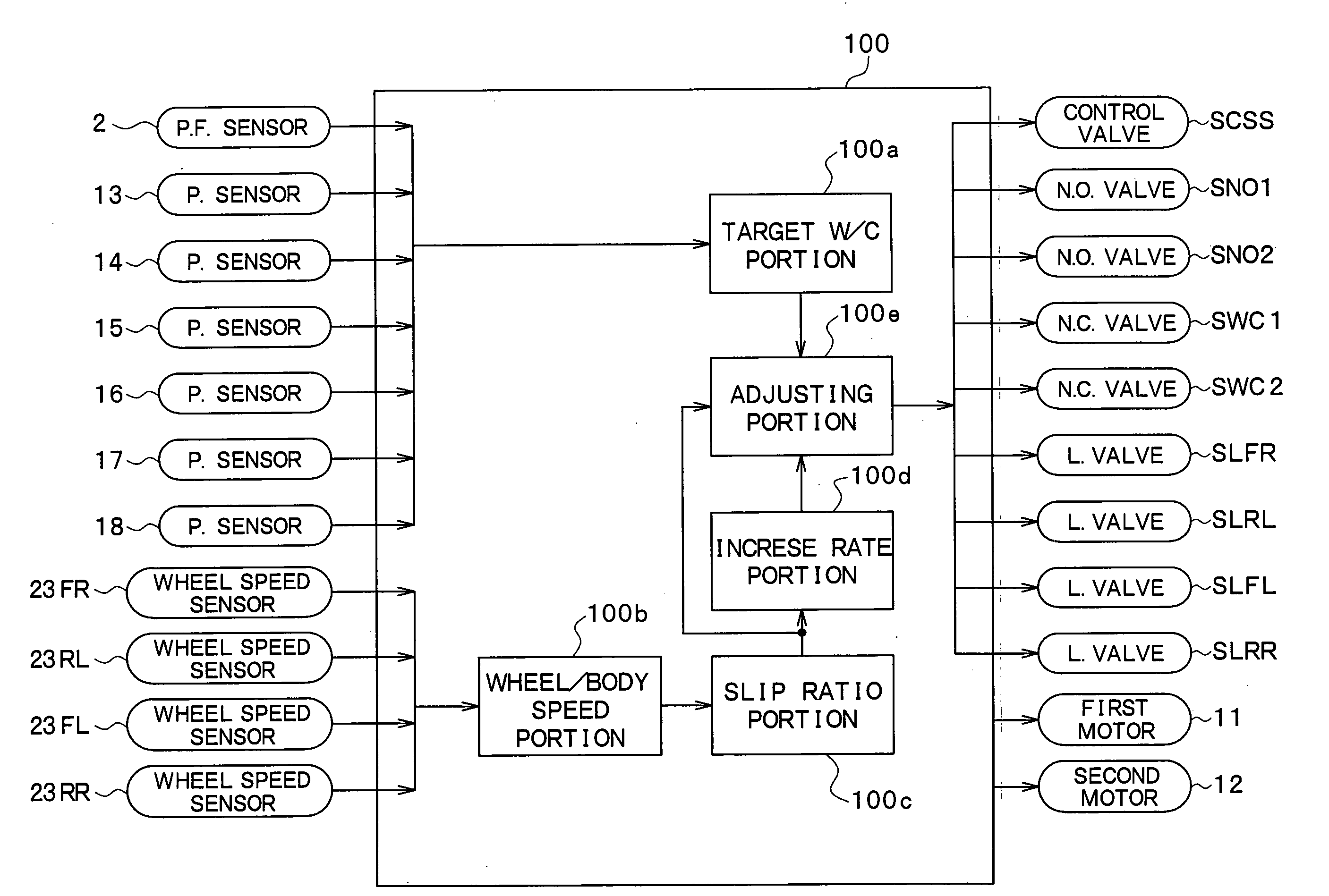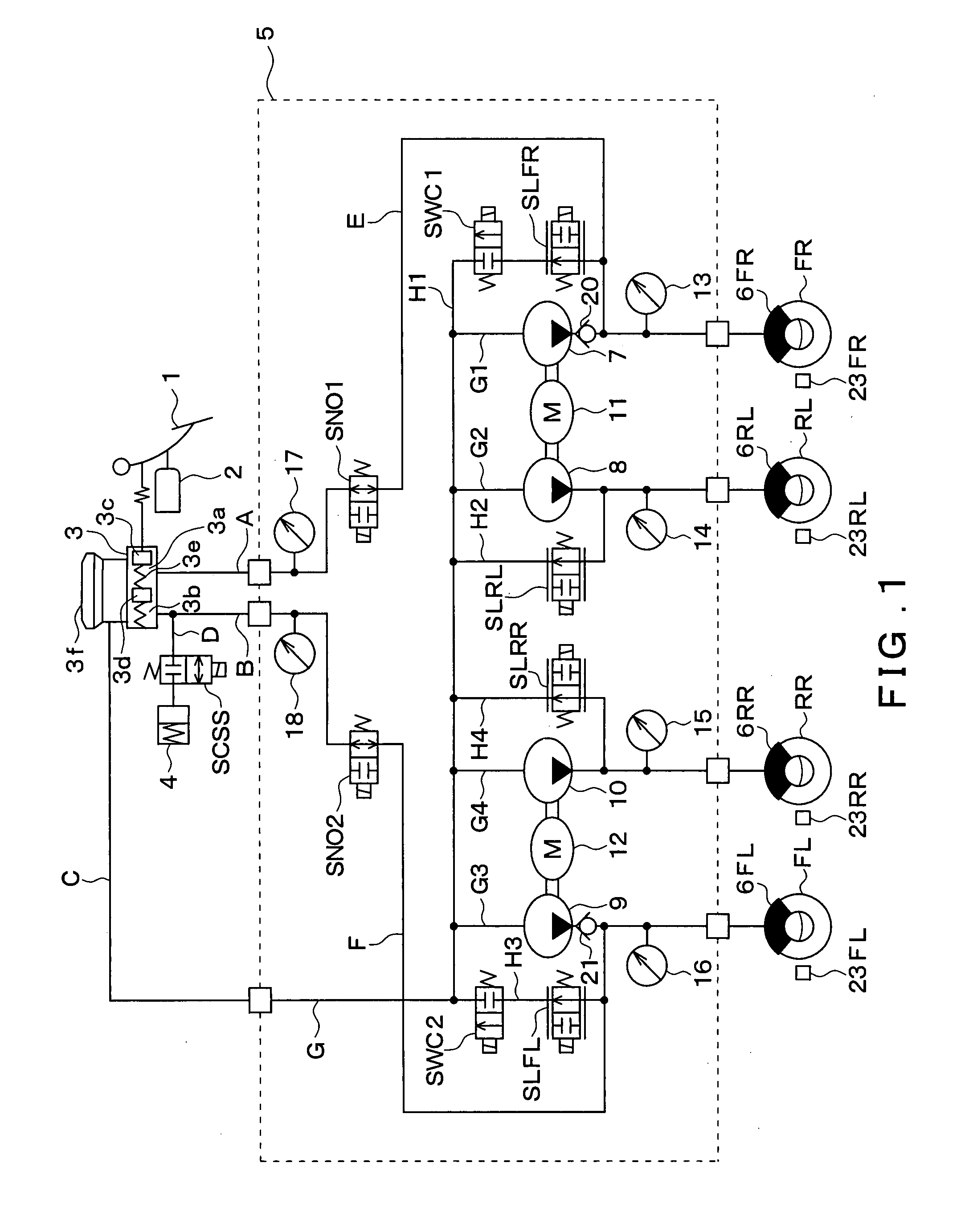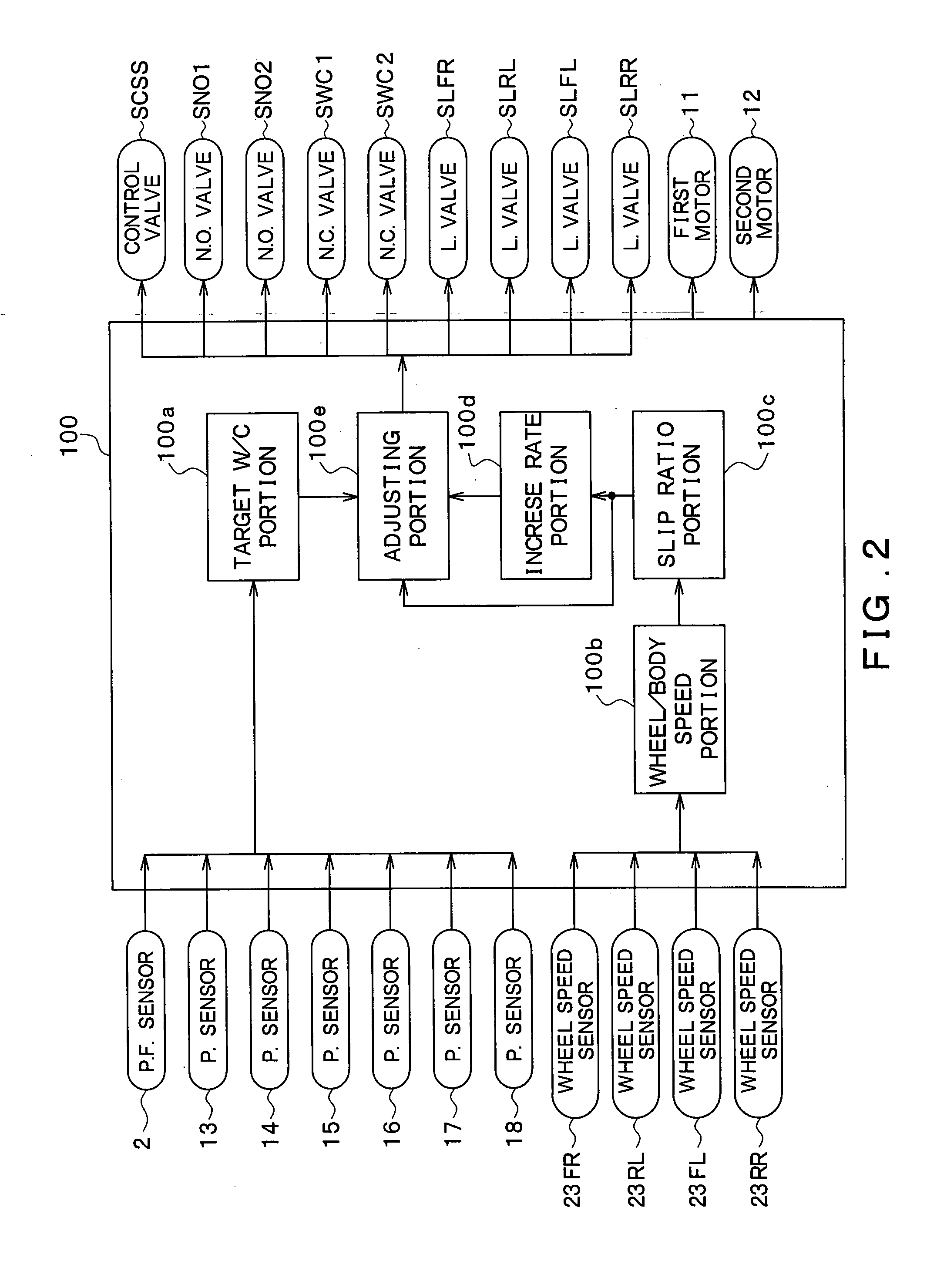Vehicle brake control device
a brake control and vehicle technology, applied in the direction of brake systems, process and machine control, instruments, etc., can solve the problems of slowing down the depressurization of the w/c, unable to achieve sufficiently quick depressurization, and obstacles
- Summary
- Abstract
- Description
- Claims
- Application Information
AI Technical Summary
Benefits of technology
Problems solved by technology
Method used
Image
Examples
first embodiment
[0028]A vehicle brake control device according to a first embodiment of the present invention is applied to a vehicle with an X-shaped hydraulic circuit including two conduit systems, one of which serves the right front wheel and the left rear wheel and the other of which serves the left front wheel and the right rear wheel.
[0029]As shown in FIG. 1, the vehicle brake control device includes a brake pedal 1, a depression force sensor 2, a master cylinder (hereinafter referred to as an M / C) 3, a stroke control valve SCSS, a stroke simulator 4, a brake fluid pressure control actuator 5, and wheel cylinders (hereinafter referred to as W / Cs) 6FL, 6FR, 6RL, 6RR, as well as a brake ECU 100 shown in FIG. 2.
[0030]When the brake pedal 1, which is an example of a brake operating member, is depressed by a driver, the depression force applied to the brake pedal 1 is inputted to the depression force sensor 2, and a detection signal corresponding to the applied depression force is outputted by the...
second embodiment
[0100]A second embodiment of the present invention will be described. In this embodiment, a portion of the configuration of the vehicle brake control device is different from the configuration in the first embodiment, but the overall configuration is basically the same as that in the first embodiment, so only the parts which are different from the first embodiment will be described.
[0101]FIG. 6 is a diagram showing a hydraulic circuit configuration of a vehicle brake control device according to this embodiment. As shown in FIG. 6, in the vehicle brake control device in this embodiment, the brake conduit G is divided into two brake conduits Ga and Gb. The first normally-closed valve SWC1 is located in the brake conduit Ga (that is, downstream of the dividing point of the conduits Ga and Gb and upstream of the brake conduits H1 and H2). The second normally-closed valve SWC2 is located in the brake conduit Gb (that is, downstream of the dividing point and upstream of the brake conduits...
third embodiments
[0106]Third embodiment of the present invention will be described. In this embodiment, a portion of the configuration of the vehicle brake control device is different from the configuration in the second embodiment, but the overall configuration is basically the same as that in the second embodiment, so only the parts which are different from the second embodiment will be described.
[0107]FIG. 7 is a diagram showing a hydraulic circuit configuration of a vehicle brake control device according to this embodiment. As shown in FIG. 7, in the vehicle brake control device in this embodiment, the two conduit systems share a single normally-closed valve SWC, instead of the first and second normally-closed valves SWC1 and SWC2 provided in the first and second embodiments.
[0108]The vehicle control device with the structure described above achieves the same effect as that of the first and second embodiments if it cuts off one or more of the first to fourth linear valves SLFR, SLRL, SLFL, and S...
PUM
 Login to View More
Login to View More Abstract
Description
Claims
Application Information
 Login to View More
Login to View More - R&D
- Intellectual Property
- Life Sciences
- Materials
- Tech Scout
- Unparalleled Data Quality
- Higher Quality Content
- 60% Fewer Hallucinations
Browse by: Latest US Patents, China's latest patents, Technical Efficacy Thesaurus, Application Domain, Technology Topic, Popular Technical Reports.
© 2025 PatSnap. All rights reserved.Legal|Privacy policy|Modern Slavery Act Transparency Statement|Sitemap|About US| Contact US: help@patsnap.com



